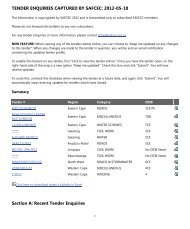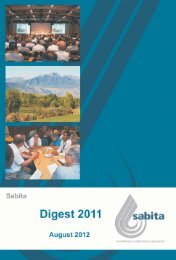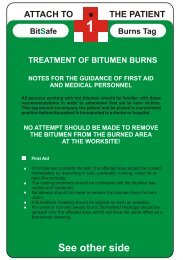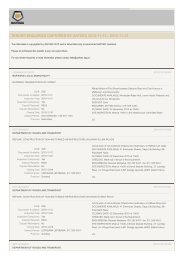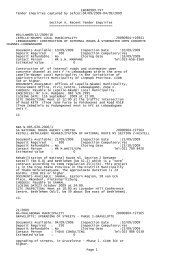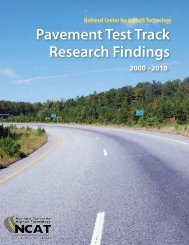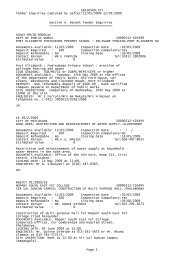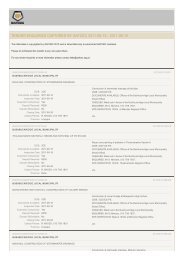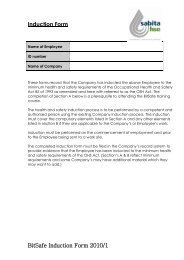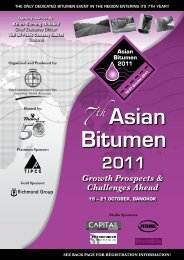DIGEST 2006 - Sabita
DIGEST 2006 - Sabita
DIGEST 2006 - Sabita
Create successful ePaper yourself
Turn your PDF publications into a flip-book with our unique Google optimized e-Paper software.
accomplished through self-study.<br />
The consequence is that several<br />
years pass before a newly<br />
graduated engineer has sufficient<br />
knowledge to fully contribute to<br />
his/her firm’s workload.<br />
In response to the industry needs,<br />
the extensive and flexible<br />
curriculum is structured into seven<br />
modules involving 11 weeks of<br />
classroom study over a 14 month<br />
period, supplemented by project<br />
work in the learner’s home office.<br />
Participants who<br />
successfully<br />
complete the course<br />
will gain credits<br />
towards a<br />
postgraduate<br />
qualification where<br />
required. Credits<br />
towards<br />
professional<br />
registration are also<br />
being discussed<br />
with the relevant<br />
authorities.<br />
An integral part of the course<br />
structure is to guide the learner<br />
through the inception, design and<br />
construction of both a new road<br />
and a rehabilitation project. The<br />
project assignments will be<br />
consistent to all the modules, with<br />
written and oral submissions to<br />
encourage the students to apply<br />
the theoretical knowledge gained<br />
through lectures to actual<br />
projects. At the end of the course,<br />
students will be required to submit<br />
a final oral project report<br />
supplemented by an extensive<br />
project file for assessment.<br />
Participants who<br />
successfully<br />
complete the<br />
course will<br />
gain credits<br />
towards a<br />
postgraduate<br />
qualification<br />
Other ad hoc initiatives<br />
undertaken during recent years in<br />
response to industry needs have<br />
been the presentation of the<br />
Quality Management of Bitumen<br />
course in 2005, which will<br />
hopefully be repeated on request<br />
during 2007/08, and Achieving<br />
Volumetrics and Compactability<br />
using the Bailey Method during<br />
November <strong>2006</strong>. An international<br />
lecture and workshop on<br />
Acceptance Control and Quality<br />
Assurance of HMA is also<br />
scheduled for<br />
February 2007.<br />
In addition, the<br />
following regular<br />
courses will still be<br />
offered on a<br />
regional basis:<br />
• Introduction to<br />
bituminous<br />
products;<br />
• Application and<br />
construction of<br />
surfacing seals;<br />
• Design of surfacing seals;<br />
• Manufacture, application and<br />
construction of hot mix<br />
asphalt;<br />
• Design of hot mix asphalt<br />
(including the application of<br />
the Bailey Method;<br />
• Compaction of hot mix<br />
asphalt (in conjunction with<br />
SARF).<br />
To ensure that best practice<br />
manuals currently published by<br />
AsAc are relevant to current<br />
technology, TG1 – The Use of<br />
Modified Bituminous Binders in<br />
Road Construction is being<br />
upgraded and revised by an<br />
industry task group for distribution<br />
68



